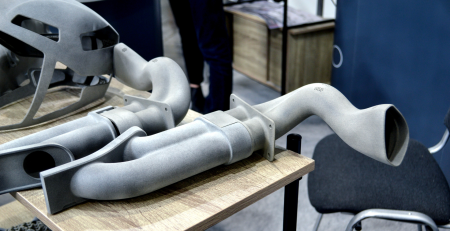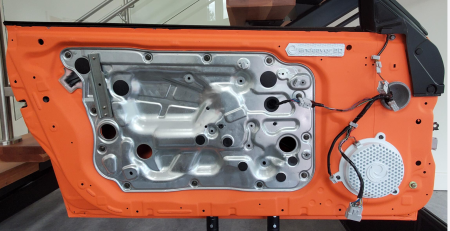The Role of Additive Manufacturing in Creating Custom Jigs
Industry Situation
From design to launch, it typically takes anywhere from 2 to 5 years, or even longer, to bring an automotive vehicle to market. Much of this timeline is dictated by the technology available at the time. As such, automotive engineers often consider cutting-edge technologies, such as Additive Manufacturing, to help bring their ideas to market more rapidly.
A typical automotive vehicle would take, on average, 17 to 35 hours for hundreds of skilled workers to assemble. While much of today’s assembly process has moved toward automation, there are still many processes that rely heavily on manual labor, especially in the creation and use of jigs.
The Role of Jigs in Additive Manufacturing
Jigs are an essential part of the automotive manufacturing process. These tools are designed to hold a part in place during the assembly or production process, ensuring precise alignment and repeatability. In traditional manufacturing settings, creating these jigs is often a time-consuming process that involves designing, machining, and testing multiple iterations. For complex jigs, the design and manufacturing process can stretch from a few days to several weeks if outsourced.
Process engineers spend considerable time designing jigs that are tailored to each unique production task. These jigs need to be strong enough to withstand the demands of the assembly line while being cost-effective to produce, often with low-volume requirements. Traditionally, jigs are made from metal to meet these requirements, but their design and production can be expensive, especially when dealing with low quantities that don’t justify the cost of mold production.
How Additive Manufacturing Can Help with Jigs
Additive Manufacturing has revolutionized the way automotive manufacturers approach the production of jigs. No longer limited to rapid prototyping, Additive Manufacturing now enables engineers to manufacture jigs quickly in a wide spectrum of materials. This technology allows engineers to test and iterate various jig designs with speed and flexibility, significantly reducing the time and costs associated with traditional jig production.
One of the key benefits of Additive Manufacturing in jig production is the ability to produce multiple iterations in a single print cycle. Process engineers can test and refine several jig designs in a matter of hours or days, rather than waiting for weeks to test a physical prototype. This iterative process allows for faster innovation and more precise jigs that are perfectly suited for the assembly line. Unlike traditional methods that often require high-strength metal jigs, many applications for jigs in automotive manufacturing can benefit from polymers or composite materials, which are often more cost-effective and faster to produce.
How Additive Manufacturing Can Help with Jigs
Factory technicians and process engineers collaborate closely to design jigs that will streamline the manufacturing process. Using Additive Manufacturing, these jigs can be rapidly prototyped, tested, and refined in real-time. The ability to print jigs directly from 3D models allows for greater design flexibility and reduced lead times.
Additive Manufacturing makes it possible to create jigs in both polymers and metal alloys, depending on the material properties required for the specific task. Whether it’s a complex jig for a specific assembly task or a high-volume jig needed for mass production, Additive Manufacturing allows engineers to design, test, and manufacture jigs in a fraction of the time compared to traditional methods.
How Endeavor 3D Can Help with Jigs Production
At Endeavor 3D, we specialize in helping automotive manufacturers optimize their production processes through the use of advanced Additive Manufacturing technologies. With our state-of-the-art Multi Jet Fusion (MJF) printers and Metal Binder Jet (MBJ) systems, we can produce high-quality jigs in both polymers and metal alloys.
Additive Manufacturing with MJF and MBJ allows us to produce jigs with greater complexity and precision than traditional methods, without the need for expensive molds or tooling. Whether you need a small batch of custom jigs or a high-volume production run, our capabilities can scale with your needs. Additionally, our approach eliminates the minimum order quantity (MOQ) requirements that often restrict flexibility in traditional manufacturing. This means you can focus on finding the perfect “JIGsaw” piece for your assembly process, ensuring that every part fits perfectly.
Business Case Example
Volkswagen is a prime example of how Additive Manufacturing can be used to reduce tooling costs and improve production efficiency. By using 3D printing for jigs, the company has saved hundreds of thousands of dollars in tooling costs while improving the speed and flexibility of its manufacturing processes. This is just one example of how Additive Manufacturing can revolutionize the creation and use of jigs in the automotive industry, providing faster, more cost-effective solutions for complex production challenges.
To learn more about how jigs are changing the manufacturing landscape, check out these case studies:






Leave a Reply
You must be logged in to post a comment.